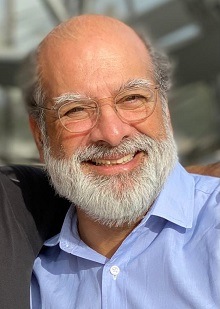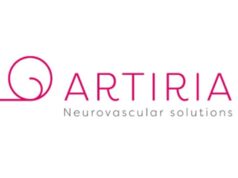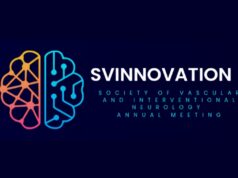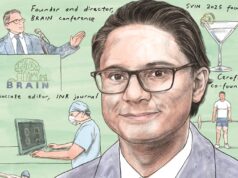
When it comes to advising young physicians on how to navigate the more commercial, industry-entwined commitments that their career will most likely bring further down the line, there are few better-placed physicians than Ajay Wakhloo (Burlington, USA)—an interventional neuroradiologist-turned-inventor and “accidental” businessman who was heavily involved in the development of multiple devices used by today’s neurointerventionists.
In January of this year, having most recently worked at the Lahey Hospital and Medical Center in Burlington, Wakhloo retired from his clinical and academic obligations to focus solely on research and development (R&D) via the three start-up companies he is currently involved with. These endeavours include photobiomodulation as a means for bringing regenerative medicine and ‘expedited healing’ into the world of endovascular aneurysm treatments.
“Before that, I was doing about 20% industry and 80% clinical work—so I was a little bit concerned about leaving the clinical space and missing it,” Wakhloo admits. “But, I have to say, the device world and new technology is something that makes a big difference to patient care, and I find the innovation part very attractive too.”
Sitting down with NeuroNews at the recent Society of NeuroInterventional Surgery (SNIS) annual meeting (31 July–4 August 2023, San Diego, USA), Wakhloo recalls that such overt levels of physician involvement with medical technology companies was “not visible, and not as prevalent” as it is today compared to when he was training.
“It has changed—there is an acceptance now that it is part of a doctor’s life,” he states. “You saw today [at SNIS] how many of the presentations were sponsored by companies, and how many of the big stroke trials are now sponsored by industry, and nobody takes offence at that. Thirty or forty years ago, it was almost taboo.
“I think that, at a certain point, every physician who is clinically active and has made certain achievements will be involved in industry work, by default. It is just the nature of things, even in medicine. That is where I see the future; a tighter relationship between industry and academia, and I think that needs to be fostered. It is happening in our field right now and I find that exciting.”
Surpassing expectations
Wakhloo is perhaps best known for the significant role he played in the introduction of flow-diversion treatments to intracranial aneurysm care. However, when he initially made this breakthrough discovery as a fellow at the University of Freiburg (Freiburg im Breisgau, Germany) back in 1989, his motivations had little to do with one day being heralded as a neurointerventional pioneer, much less the commercial opportunities that would later follow.
“That was an accident,” he concedes, discussing how initial descriptions of the fundamental mechanism of flow diversion from him and his colleagues resulted in him ultimately co-founding and leading Surpass Medical, which developed one of the first approved flow diverters—an eponymous device that, along with the company itself, was acquired by Stryker in 2012.
“When I was working on the flow-diverter concept, I made an observation that led to further digging and research, but it never occurred to me to commercialise that concept,” he continues. “Until then, I was mainly involved as a consultant with the major medical technology companies, but establishing a company, and building a device and then selling it, that was really an accident in my life.”
With the flow-diverter concept now established and widely published, companies like Covidien (Pipeline; now Medtronic) and Balt (Silk) picked up the idea and ran with it. And, today, the use of flow diverters in endovascular aneurysm treatments is the proverbial tip of the iceberg. As Wakhloo says, this space has “exploded” since its inception, with researchers now looking to utilise these devices in stroke as well as several other parts of the body, from the kidneys to the heart. “We thought it would be for some challenging giant or large aneurysms where coiling does not work,” he adds, “but some people are telling me that the market is worth over US$3 billion worldwide today!”
Speaking from experience
For his part, Wakhloo reinvested the money he made from selling Surpass to Stryker and became far more focused on the “interesting path” of industry work. Since then, he has had a number of other albeit less prominent successes, developing new balloon technologies and aspiration catheters at Inneuroco, and forming part of the team that initialling conceptualised transradial access for neurovascular procedures—now marketed by Medtronic as ‘Rist’.
A breakthrough that—from a purely commercial standpoint, at least—Wakhloo jokes he would rather forget is the one that ultimately paved the way for one of today’s most commonly used stroke thrombectomy devices: the stent retriever. He recalls how he inadvertently uncovered and later published this concept while searching for a means to retrieve coils that had been unwantedly left in patients’ aneurysms following embolisation procedures.
“That is an example of an idea with huge implications—for [me], as an inventor, very financially rewarding—but I did not patent it,” Wakhloo explains. “Now, my advice to the younger generations would be to keep a historical file of who you talked to about the idea, what you have disclosed, where you have presented it; it becomes a very important document. Even when you sign an NDA [non-disclosure agreement], it does not mean a lot, because people can circumvent your idea with small tweaks and whatnot.”
Wakhloo also advises fledgling inventors to apply for a patent once their concept has been prototyped and is considered feasible, but before presenting it at conferences or discussing it publicly.
“Keep it confidential,” he continues. “Of course, you will have partners and colleagues you trust to disclose it to. And, once you get feedback that you are not insane and this is something really good, write a patent with a lawyer and file it. Generally, it is not that expensive; around US$4,000 or US$5,000, if you have the cash or you can put that amount together with colleagues.”
Advice for budding innovators
Here, Wakhloo credits much of his success to a longstanding colleague, biomedical engineer and fellow inventor Barry Lieber, who he partnered with through the development of the flow diverter and continues to work closely with today within each of his start-up endeavours.
“We know what we need on the clinical side, and a good engineer understands your language,” Wakhloo says, also highlighting the importance of having a team of clinician colleagues—either as investors or advisors—who are supportive of your idea, because “you do not want to be alone in that vacuum”.
He goes on to stress the need for doctors to disclose all of their industry-related activities, and potential conflicts of interest they may create, to the academic and medical institutions that employ them—ideally having these discussions prior to “embarking on that journey” with industry. Wakhloo further warns that there are discrepancies in how different centres will react to a physician’s R&D efforts; some may provide financial support for things like legal processes and prototyping in exchange for a share in any future commercial spoils, while others will be opposed to their staff doing any industry-related work, or demand a far greater stake in said work.
The potential financial support a would-be inventor’s medical institution will likely provide is a key detail because, as Wakhloo states, device prototyping and subsequent in-vitro or animal studies can cost “several million dollars”, and attracting investment is “not easy”.
“It is your leadership, and your skillset, that will convince the community and the investors of why this is a concern,” he adds. “And, nowadays, it boils down to a business plan—have you worked it all out? Is there a need for the technology? Does it make sense? Is there a commercial value in the product? These things can be fairly challenging.”
However, with all of this being said about the logistics and practicalities of carving a path into the world of industry, Wakhloo’s salient piece of advice is this: “Do not think about yourself becoming a hero—it is actually about the patient”. Citing the motivations that led him to first outline flow-diverter technologies and, less directly, stent-retrieval devices, Wakhloo says he “never thought” about the monetary, commercial aspects, and that these were more of an unintended byproduct of his quest to uncover something that would improve patients’ lives.
“Instead of focusing only on the excitement of innovation, I think it is important for a young physician or clinician to ‘look behind the shadows’— start looking at your daily operations and asking, ‘why did this not work?’ he notes. “Why does a technology not work; why does it only work 50% of the time, or only in a certain group of patients? What is it that bothers you when you drive home from work? And, put yourself in the seat of the patient. What would they like to see? What are they complaining about?”
Wakhloo concludes that, with this in mind, observation is a “critical skill”, and one that—when coupled with a creative streak—is “very important” in the sphere of innovation. “Whether it is a small thing or a big, transformational technology, the driving force should be the patient, and if it is something they will benefit from,” he also asserts.










